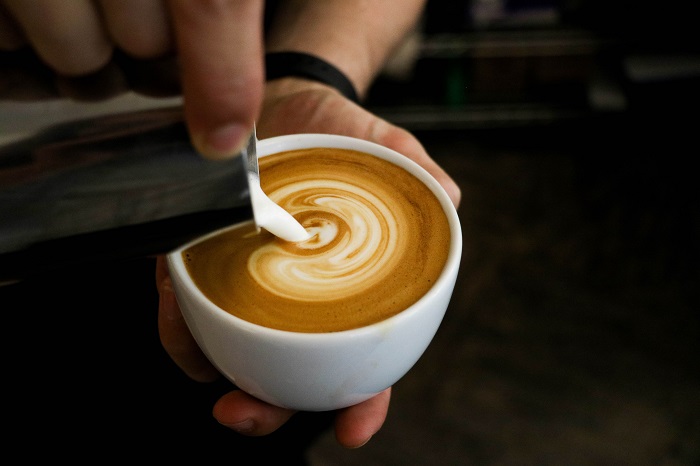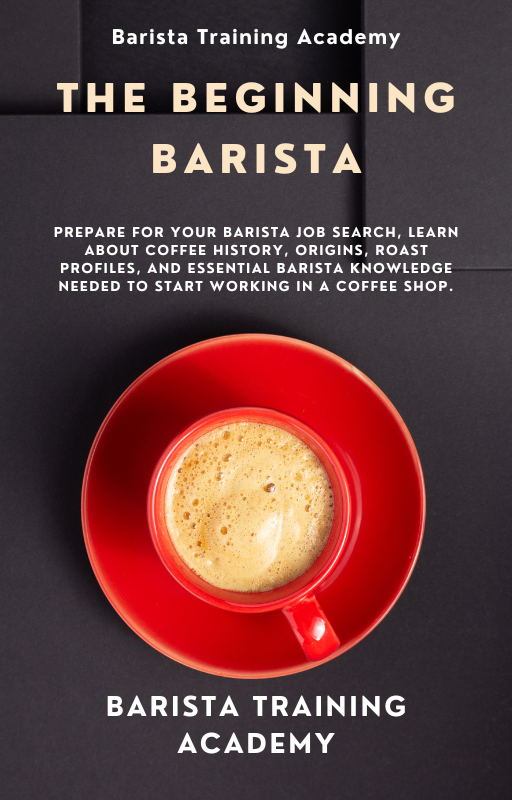Barista Training: The art of steaming your milk
With this online barista training post, you will learn the basics of coffee drink-building. We have covered a range of topics before, like espresso extraction, coffee tasting, barista resume, cover letter, etc. So be sure to check our previous blog posts and our Barista Training Guide.
Today, let’s talk about milk, which is truly the second most important ingredient after coffee itself.
Milk portioning
As an effective barista, you don’t want to waste any of your milk. So, you want to steam only as much milk as you need for the beverage you are preparing.
At your barista workstation, it’s worth having at least three pitchers of different sizes for steaming different amounts of milk:
- 350 ml (12 oz) – for cappuccino size and smaller beverages. If you use this pitcher to steam your milk for a latte, fill only half of it.
- 600 ml (20 oz) – for different sizes of latte.
- 950 ml (32 oz) – for steaming two drinks at once or for a large latte.
Never fill your pitcher more than half full.
Remember: when steaming, the milk will expand 30-40% due to the heat. This is natural and what gives milk its sweet and fluffy elements.

Milk steaming workstation
Almost every espresso machine is equipped with a steam wand that has a removable tip. You release hot air with a knob, on-off button, or lever, depending on the type of espresso machine you operate. It would help if you also had a dedicated wet towel to wipe the steam wand after every single use immediately.
A barista should always keep milk and pitchers in a fridge. Rinse your pitchers after every use. Keeping your workstation clean is critical for your espresso machine maintenance and the health of you and your customers. Keeping your customers safe from foodborne illnesses is one important element of your job as a barista.
Milk steaming technique
As part of your online barista training, you need to learn how to steam your milk properly. Before you start, purge the steam wand to get rid of any excess milk that could have accidentally stayed inside. Set the angle of the steam wand towards the floor.
The tip of the wand should be right below the surface of the milk, closer to the side of the pitcher. Turn on the hot air pressure and start stretching your milk, keeping the tip of the steam wand close to the surface. As you add the air to your milk, you’ll hear a hissing or paper tearing sound. Warm your milk till it’s slightly hot to touch (approx. 100 F). Quickly raise the pitcher and heat your milk.
At this stage, the milk circulation will break down the bubbles so that you don’t see them anymore. This is the secret of making creamy, fluffy foam. Once you get the desired temperature (approx. 140F), turn off the hot air and set the pitcher aside. Purge the steam wand.
Now you need to polish your milk. Make a tap with your pitcher to get rid of any bigger bubbles, then swirl your milk in circular motions. This helps to even out the milk and eliminate surface bubbles.
So, let's review milk steaming as a step-by-step process:
- Purge the steam wand
- Submerge the steam wand in the milk just under the surface of the milk
- Activate the steam knob/lever
- Stretch your milk for a few seconds until it's hot to the touch
- Raise the pitcher and heat your milk until 140F
- Turn off the steam knob/lever
- Purge and wipe the steam wand
- Tap and swirl the pitcher
Now you can draw some beautiful latte art patterns!
Not enough foam?
If you don’t get enough foam, it means you are doing something wrong on the stretching stage. Perhaps, you introduce too little air or don’t spend enough time stretching your milk.
On the other hand, if you get too many bubbles or are thick and airy, you introduce too much air to your milk. Try not to spend too much time on the stretching stage – lift the pitcher as soon as you feel with your hand that it’s too hot.
If you are thinking about how to be a barista with no experience, you can rest assured that most coffee shop owners look for a friendly, open-minded, and teachable personality rather than a barista with years of experience. Unlike barista training, your personality is something you can't develop or learn. You just come with it.

Brought to you by Barista Training Academy, “The Beginning Barista,” Your Ultimate Prep Guide to Getting Your First Job as a Barista” is an ultimate resource that is available online and is affordable for anybody who is looking to start a career in the coffee industry. For more information, visit our blog.
